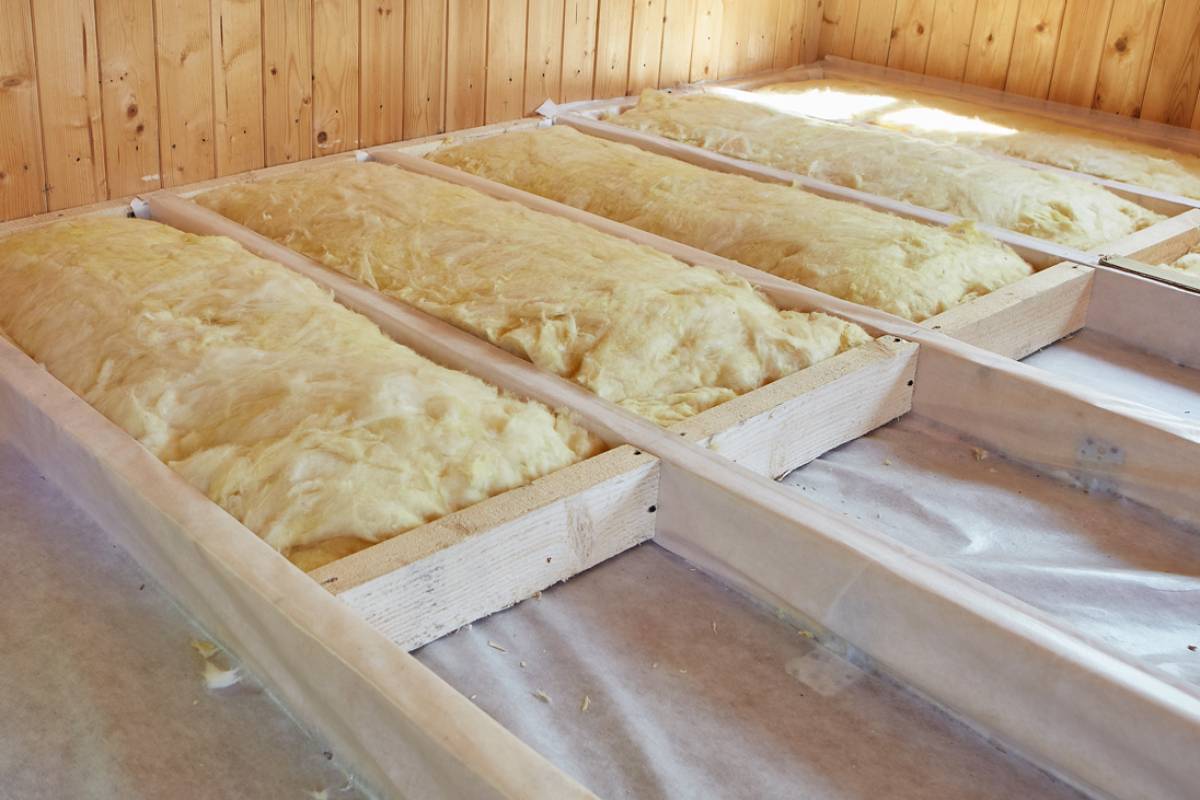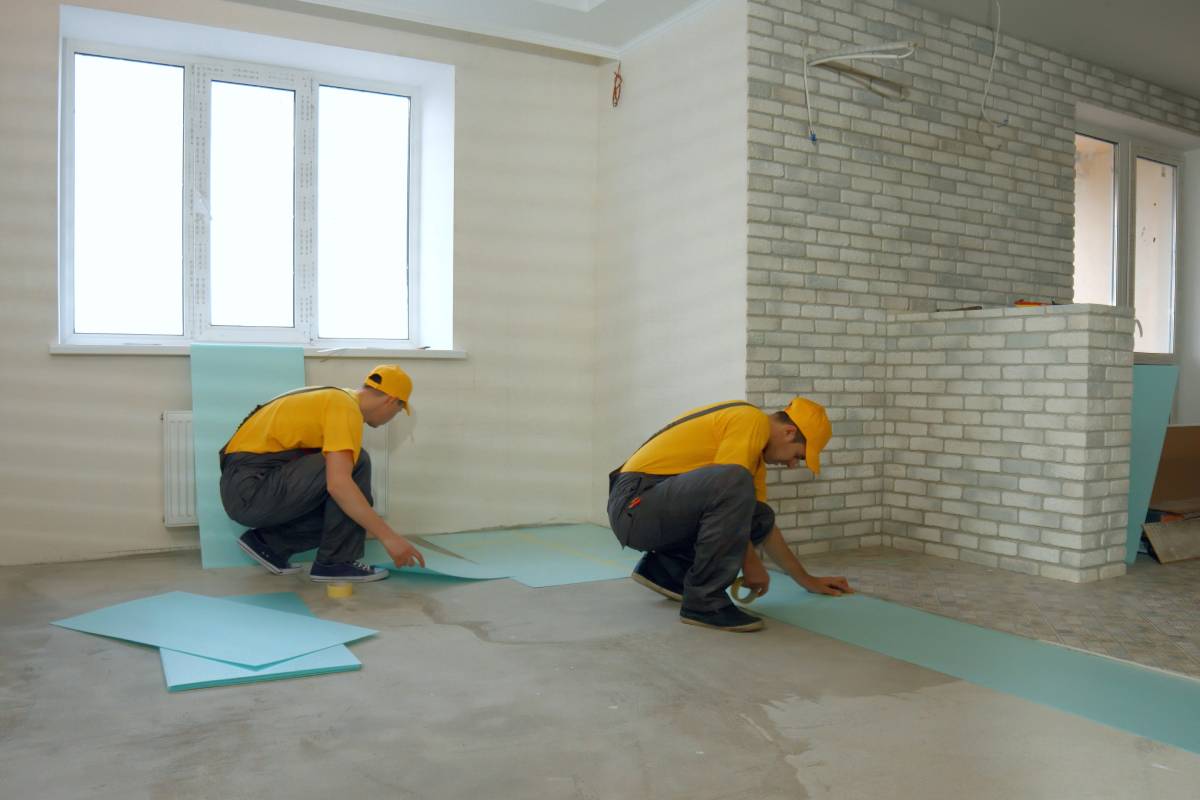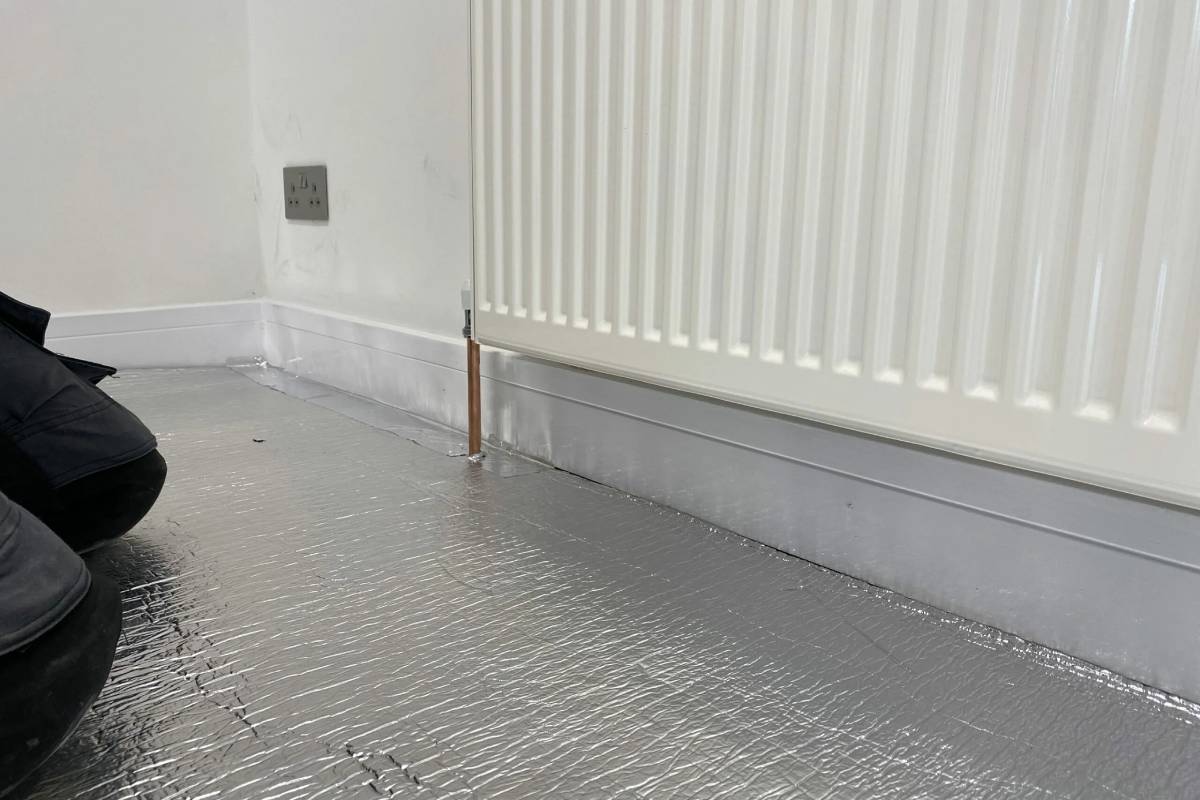It’s common to feel nervous on your wedding day, but if you’re experiencing “cold feet” on your floor, it could be a sign of poor insulation. The solution is to replace it with new underfloor insulation. Fortunately, there are many options available, but the challenge is figuring out which one is right for your floor.
To simplify the shopping process, here are 4 tips for choosing the best underfloor insulation.
4 tips for choosing the best underfloor insulation
Not all floors require underfloor insulation
Before deciding on insulation, check if your flooring actually needs it. Some floors may not require underfloor insulation based on their materials and construction methods. Solid concrete, for example, usually doesn’t need it unless it’s a suspended concrete slab. Other conditions where insulation may not be needed include the presence of chemical-based insect spray, asbestos, or non-compliance with wiring rules (AS/NZS 3000:2018). It’s essential to assess these factors before investing time and effort in installation.
Explore your choices
According to the Australian Standard (AS/NZS 4859.1), the top two underfloor insulation options are bulk insulation and reflective foils.
Bulk insulation is effective at retaining heat in winter and blocking out summer heat. Polyester, natural wool, rock wool, and expandable polystyrene are recommended materials for bulk insulation.
Reflective foil insulation is beneficial for reducing radiant heat gain. Ideal materials for reflective foil insulation include single and double-sided foil laminates, bubble wrap, and foam foil-faced wrap.
Here’s a breakdown of the differences:
- Reflective foil is best for warmer climates, while bulk insulation suits colder climates.
- Reflective foil is lighter than bulk insulation.
- Reflective foil is prone to dust accumulation.
- Reflective insulation requires more installation effort compared to bulk insulation.
- Reflective foil insulation is slightly more expensive than bulk insulation.
Adhere to Australian Building Code requirements
When constructing or renovating a home, it’s crucial to follow the Building Code of Australia (BCA) to address key considerations such as the house type, apartment specifics, and climate zone for each state. These factors play a vital role in determining the required R-value for different parts of the house.
Before choosing underfloor insulation, check the BCA requirements to ensure you select the most suitable insulation for your location.
Specifically, refer to this part of the BCA: Building Code of Australia Housing Provisions (BCA) | Part 3.12 Materials for the thermal insulation of buildings (AS/NZS 4859.1)
Select the right R-Value
Ensuring the correct R-value may seem complex, but it’s a crucial factor that needs accuracy. Manufacturers and insulation professionals commonly emphasize that higher R-values indicate greater effectiveness.
Curious about what R-value means? It stands for thermal resistance, determining how well an insulating material resists conductive heat flow. For floors, the basic R-value requirement is essential, considering factors like climate, house type, density, and thickness of the insulation material.
Creating a comfortable home is a priority, and underfloor insulation can contribute significantly. Additionally, it addresses various floor issues, such as updating old flooring or replacing broken tiles.
Can you insulate under floorboards without removing them?
Certainly! Insulating under floorboards without removal is a common concern for homeowners looking to improve energy efficiency and enhance comfort in their homes. The good news is that it’s indeed possible to insulate under floorboards without taking them out. Let’s delve into the details.
Why insulate under floorboards?
Insulating under floorboards comes with several benefits. It helps in maintaining a comfortable indoor temperature by preventing heat loss, especially in colder seasons. It also aids in soundproofing, reducing noise transmission between floors.
Additionally, insulation under floorboards can contribute to energy savings by making your home more energy-efficient.

Methods for Insulating Under Floorboards Without Removal
1. Spray Foam Insulation:
- One effective method is using spray foam insulation. This involves spraying a special foam insulation material between the floor joists. The foam expands to fill gaps and create a seamless layer of insulation.
2. Rigid Board Insulation:
- Rigid board insulation, made from materials like foam boards, can be fitted between the floor joists. These boards provide a barrier against heat loss and help maintain a consistent temperature indoors.
3. Fiberglass Batts:
- Fiberglass batts, which are pre-cut insulation material, can be placed between the joists without removing the floorboards. They are relatively easy to install and provide good thermal insulation.
4. Blown-In Insulation:
- Blown-in insulation involves blowing loose insulation material, such as cellulose or fibreglass, into the spaces between the floor joists. This method is efficient in filling gaps and voids.
Considerations Before Insulating:
1. Ventilation:
- Ensure that there is proper ventilation in the underfloor space. Good airflow helps prevent moisture buildup, which is crucial for maintaining a healthy environment and preventing mould.
2. Access Points:
- Identify access points for installation. While you may not need to remove the entire floor, having access points makes the installation process more straightforward.
3. Moisture Barriers:
- Consider installing moisture barriers, especially if your underfloor area is prone to dampness. Moisture barriers help in preventing water vapour from entering the insulation material.
Professional Assistance:
While some homeowners may choose to undertake underfloor insulation as a DIY project, seeking professional assistance is advisable, especially if you’re unfamiliar with the process. Professional insulation installers have the expertise to assess your specific situation and recommend the most suitable insulation method.


